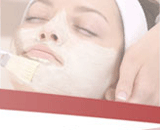|
Keloid Scarring
Keloids result from abnormal wound healing due to fibroblasts producing
excessive amounts of collagen, making collagen fibres thickened. This is
not related to the severity of the wound.
Keloid scars are more common in ages 10 to 20 years old and more
frequently in females, black, Asian, Polynesian skins. However, keloids
can develop in all races, age groups, male or female and may have a
genetic factor. The worst areas for scarring are over bony areas, joints,
shoulders, earlobes with the sternum being the worst.
Hypertrophic and keloid scars both manifest as pink, red, purple,
itchy, painful, raised, ugly scars and usually remain in that condition
for years if untreated.
The difference between hypertrophic and keloid scarring is that
hypertrophic scars follow the incision line whereas a keloid
infiltrates into surrounding ‘normal’ tissue.
Keloid Scar Formation
 
One must try to promote balanced collagen production,
particularly in the initial inflammatory phase of wound healing.
Reduce swelling and inflammation to a minimum, which
one can with RégimA Scar Repair.
If a scar is over 3 months old and is hypertrophic or
beginning to keloid one should start peeling with natural
AHAs. One may peel every 2 weeks starting with 20%
building up the percentage depending on tolerance.
The body can obviously tolerate higher concentrations than
the face and the concentration of treatments would be
decided by the skin care professional following assessment
and initial trial to ascertain client response.
For further information visit www.regima.zone
Or contact RégimA:
Tel: 011 615 2869 Email: info@regima.com |








